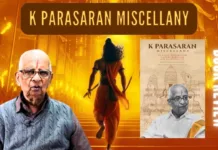
Why did 2024 LS predictions miss the mark?
When we talk about opinion polls and exit polls, we invariably mean vote share, seat share, etc., which are part of Quantitative Research. Many of us may not be aware that this quantitative information constitutes only part of the possible research. The other part is Qualitative Research.
Both these are complementary, like our two eyes. While one eye may be able to see what is before us well more often, sometimes if we close one eye and walk, we could hit an object, like a door. This is because the two eyes together give us depth perception, which one eye alone won’t provide well enough.
How did (almost?) all the pollsters fail to capture the extent of reverses in store for BJP/ NDA in UP, Maharashtra, Rajasthan, and Karnataka in their 2024 Lok Sabha (LS) survey findings? This is not the first time they failed to get it right; there have been a few other times in the past too.
But this is not to say that they always get the results wrong. Some of them get them right most often.
What explains this dichotomy?
Sometimes, as happened in the 2024 LS polls, Quantitative Research findings could be misleading. Qualitative Research, if done in addition, may have given us a more comprehensive understanding of voter intentions.
Quantitative Research uses structured surveys with large sample sizes to measure how likely voters are to vote for specific candidates or parties. This helps in predicting election outcomes numerically.
For Quantitative Research to give reasonably good results, there are many prerequisites: like right sample size, the right mix of demographic samples (religion/ caste, geography, age group, gender, income group, education level, etc.), the right questions, rightly asked, by competent surveyors, in the right setting (e.g., personally or over the phone, privately or in the presence of others), etc.
All these factors are very difficult to control precisely, though competent and committed agencies may do a fairly good job.
The probability of errors projected (often claimed to be +/- 3%) assumes there are no factors outside their control, which is never true.
Some voters may either refuse to reveal their voting intention, or may mislead the surveyor for any number of reasons, including fear of reprisal by the party they don’t want to vote for, or even from their own kith and kin who may have strong opposing political leanings.
Some voters decide who to vote for after the opinion polls but before the time of actual voting; their decisions could be swayed by events that may happen during this period, or the voter may simply make up her/ his mind late. They are often even influenced by opinion poll findings. These voters’ final voting intentions may not be reflected in opinion poll results.
Exit polls are more reliable but still not 100%.
Perhaps some of these factors went wrong in the opinion polls and exit polls in 2024.
Despite all these constraints, if some of our pollsters get reasonably correct results often, we should give them credit for the excellent job they are doing.
Qualitative research aims to gather an in-depth understanding of voter behavior and the reasons that govern such behavior. Their findings are not numbers. They are specialists in this realm and collect non-numerical information (in text/ video/ audio form) to understand the voters’ thoughts, opinions, and experiences through detailed individual/ group interviews. Collating the findings is not as easy as numerical data analysis.
FGI (Focus Group Interview) is one of the most useful techniques, where typically a group of about 8 to 10 voters of a certain homogeneous group (say, same caste/ religion/ gender/ age group/ political leaning, etc) are engaged by the researcher in a free-flowing but directed conversation to understand their minds.
This exercise is repeated at least 3 times to check for consistency. Only expert qualitative researchers will be able to put the interviewees at ease and get what is in their minds out over a discussion of about 1 to 1 1/2 hours.
In a typical pre-poll FGI, for example, the objective could be to find out what Dalits in a UP constituency may be thinking about their condition under Yogi-Modi rule, and whether they would vote for NDA or the I.N.D.I. Alliance, and why. The idea is NOT TO influence them to think one way or another, but to understand what the group’s thinking is. If there are divergences of views, these will also be captured along with their relative composition.
Talking to a cross-section of people in unstructured ways, Town Halls, Debates, etc., which the media do, is not FGI/ Qualitative Research.
FGIs can also be done to understand how the group can be influenced to think in a certain way. For example, in Tamil Nadu, BJP could have conducted FGIs to find out the reasons why a large % of the voters were not interested in voting for Modi/ NDA/ BJP candidates, and under what conditions (like language and other policies, manifesto, local level/ state level promises, leadership, etc.) they would have considered voting for BJP/ NDA. This is an insight that can’t be gained from Quantitative Research.
I’ll try to build on this hypothesis to suggest what NDA/ BJP can do to regain the trust of the electorate to the high levels of 2014 and 2019, and even beyond, in a few future articles.
For all the latest updates, download PGurus App.
- Why opinion/ exit polls go wrong - June 25, 2024
- How to focus on jobs at the bottom of the pyramid - June 20, 2024
- RSS: The friend, philosopher, and guide of BJP - June 17, 2024










